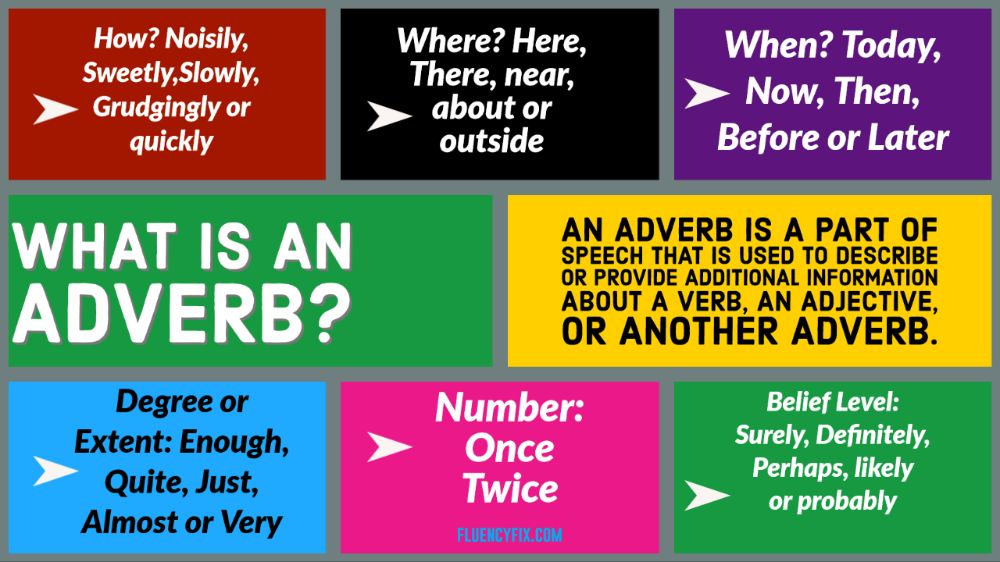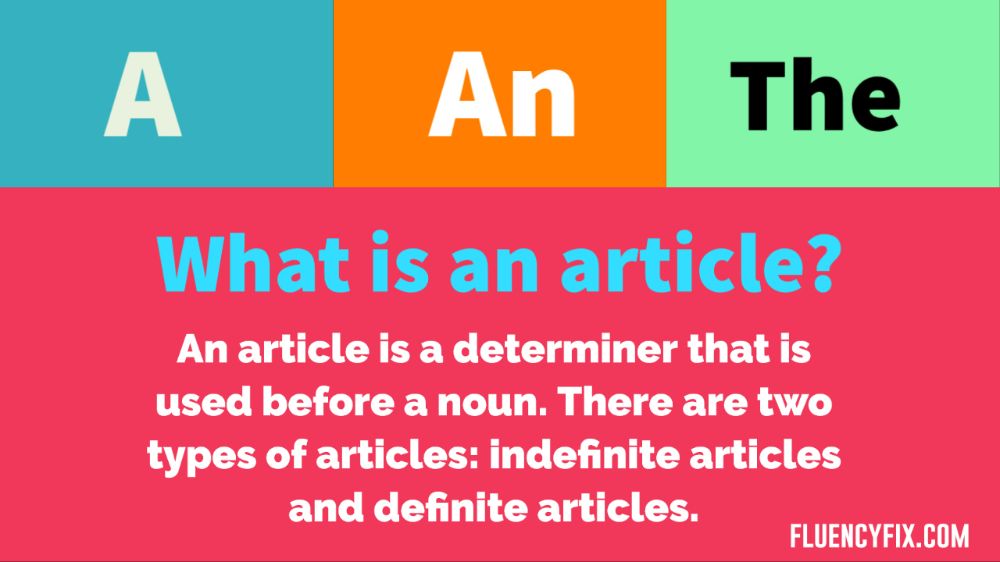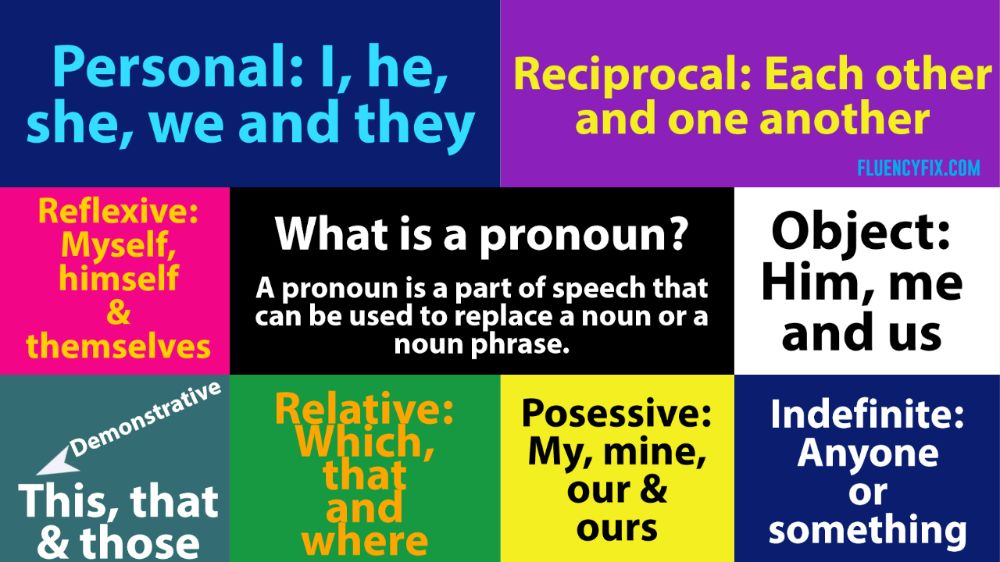What is an adverb?

An adverb is a part of speech that is used to describe or provide additional information about a verb, an adjective, or another adverb. A lot of adverbs end in “ly”, but by far not all of them.
Some examples of adverbs that end in ly are quietly, quickly and painfully. Some examples of adverbs that do not end in ly are very, fast and never.
There are several different types of adverbs.
Adverbs of time show when something is done. Some examples of adverbs of time are early and yesterday.
He left early because he had a dinner date.
I saw him yesterday.
Adverbs of manner show how something is done.
Some examples of adverbs of manner are slowly and effectively.
It wasn’t because of her age. She always just walked slowly.
He needed a project manager who could handle sudden changes effectively.
Adverbs of place show where something happens. Some examples of adverbs of place are here or upstairs.
A few minutes ago, he went upstairs.
There are no jobs here.
Adverbs of frequency show how often something is done.
Some examples of adverbs of frequency are sometimes and occasionally.
I eat pizza, but only occasionally.
He forgets to walk the dog sometimes.
Adverbs are often (but not always) at the end of a sentence.
Adverbs that modify adjectives are used before the adjective.
**Two examples of adverbs modifying adjectives are: very beautiful and really interesting. **
**Adverbial Phrases or adverbial clauses **
Adverbs can be made up of more than just one word.
These adverbs that are made of more than one word are also called adverbial phrases or adverbial clauses.
Two examples of adverbial phrases are at 100 miles per hour or at home.
Originally published on May 16th, 2019

